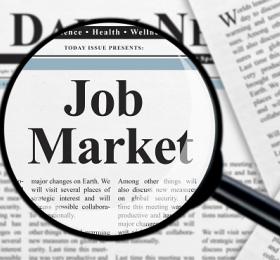
Right down the fairway! The timing of this month’s report from the Bureau of Labor Statistics was a bit odd as its release coincided with the Good Friday holiday. As a result, the majority of “Western” markets were closed, and it became the only notable tranche of new data for investors to chew on over the long holiday weekend. So, we decided to align our release of the nonfarm note with this morning’s CPI report. Getting down to the nitty gritty, US payrolls expanded by 236,000 to close out Q1. This brings average monthly jobs gain to ~355,000 thus far in 2023. The official unemployment rate fell to 3.5% as labor force participation ticked higher to 62.6%. Meanwhile, average hourly earnings increased 0.3% MoM. While the current pace of hiring is largely indicative of a labor market that is still too strong for the Fed’s liking (as it relates to labor supply), economic activity is certainly slowing and with it the pace of inflation. Does this mean the fight is over? Not quite-- the battlelines are being redrawn.
An historic run in interest rates a la the world’s central banks has taken much of the wind out of inflation’s sails. Of course, there are also “real world” consequences for these actions. Pressure within the banking system was on full display in March. The collapse of Silicon Valley Bank (SVB) in the States and the European rescue/ bailout of Credit Suisse (CS) could very well be the proverbial tip of the iceberg as the financial system attempts to reorder itself with the backdrop of structurally higher interest rates. Stress among US regional lenders has the potential to restrict the availability of credit to would be American borrowers. Reducing the availability of credit also has the knock-on effect of increasing the cost of capital. On the one hand, it means the system is effectively doing some of Mr. Powell’s bidding. On the other hand, it certainly increases the odds of an economic freeze. Any “freeze” would result in a drastically weaker labor market with inherently higher unemployment. Moreover, today’s political environment in the US isn’t exactly conducive to bailouts within the financial sector. Staunch conservatives reject the idea of saving “woke” lenders, and liberals equally resist any assistance that could “trigger” social unrest. Anyone recall the Occupy Wall Street movement? The best Mr. Powell can do is engineer an orderly reset among American lenders, and one could argue he is busily doing just that. The key ingredients here are: time and liquidity. The Federal Reserve can buy plenty of both.
On Sunday, March 12 the Fed created the Bank Term Funding Program (BTFP) for eligible lenders. The goal was to shore up confidence in the American banking system following the rapid collapse of Silicon Valley Bank on March 10. VC lending was especially at risk. Regardless of the Federal Reserve’s actions, stress among regional lenders ratcheted higher the following trading week. So, Mr. Powell decided to coordinate his actions with his G-7 peers. Over the next weekend the Federal Reserve, ECB, Bank of England, Bank of Japan, Bank of Canada, and Swiss National Bank intervened in currency markets to provide ample US dollar liquidity within the global financial system. This also happened to be the same weekend that Credit Suisse was effectively bailed out (Coincidence?). Rumors then began to swirl regarding the viability of troubled German lender, Deutsche Bank (DB). Ultimately, Chancellor Olaf Scholtz stepped in to reassure the financial universe of DB’s profitability. The central banks bought time and stemmed a burgeoning liquidity crisis… for now. Nevertheless, this episode reveals something troubling regarding the fragility of European and “smaller” US financial institutions in the context of a structurally higher rate environment: they need time to adapt! Moreover, there must be a healthy relationship between assets and liabilities for our economic system to thrive. After more than a decade of growth fueled by balance sheet expansion and risk-seeking behavior, largely catalyzed by ZIRP (zero interest rate policy) and NIRP (negative interest rate policy), a new reality is setting in: free cash flow and profitability are the best defense AND offense. An economic freeze would reduce free cash flow and squeeze corporate profit margins, so the Fed needs to be extremely careful here. Thus, we are reducing our expectations from two more rate hikes of 25 bps each, which would put the upper band of fed funds at 5.50%, to just one with effective fed funds likely topping out around 5.08%.
Earnings season has arrived once again and our eyes will be trained on the operating level. How well corporate America can navigate the first half of 2023 will set the stage for a rebound in the back half of the year. Generally speaking our expectations are for a rough couple of quarters for earnings as the dual impact of higher rates and slower growth filters through the economy. Naturally, this presents a risk to our 2023 earnings expectations, but the counterbalance (or silver lining) is the possibility of a lower terminal rate and/ or quicker path to rate reductions. At this point, we appear to be in the bottom of the 9th with regard to this hiking cycle-- let’s hope Mr. Powell doesn’t need extra innings! Opportunity is on the horizon. Stay tuned.
News Release: Bureau of Labor Statistics (The Employment Situation- March 2023)